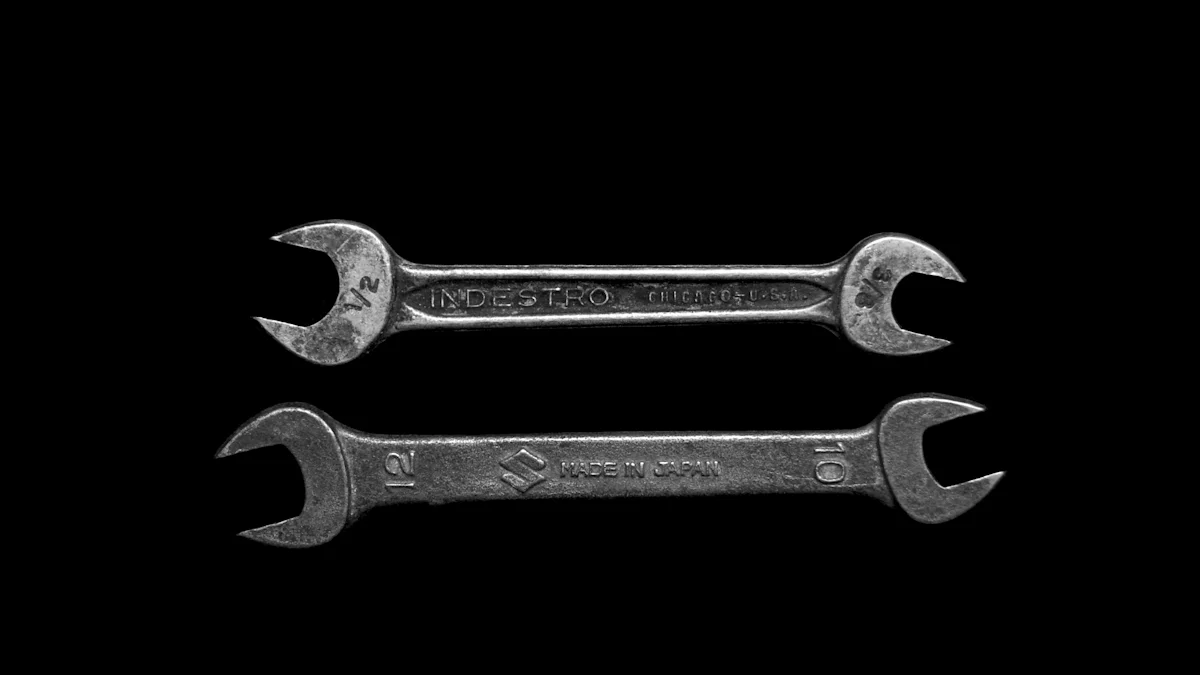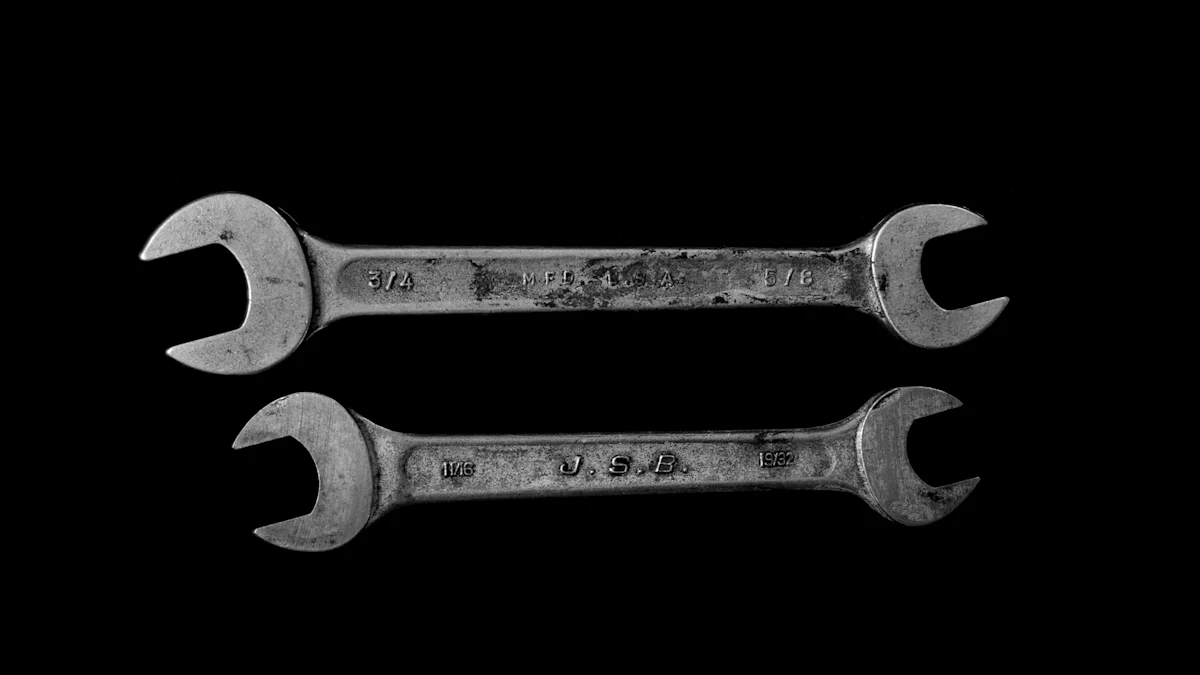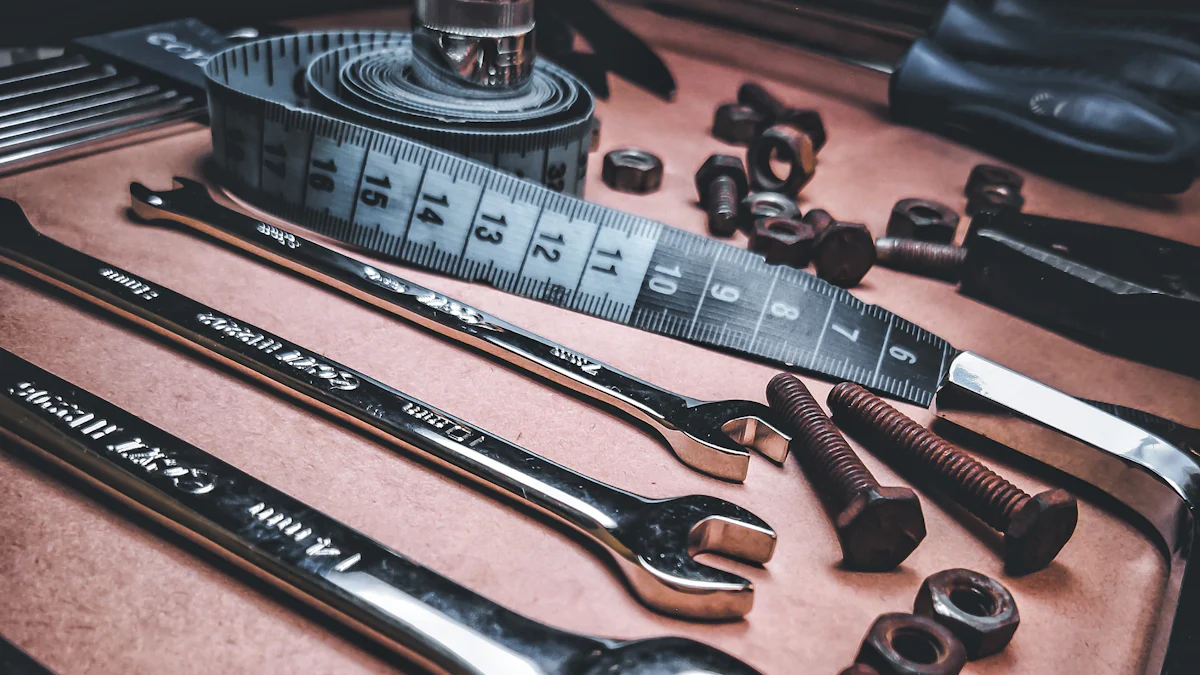
A ratcheting open end wrench combines the speed of a ratchet with the accessibility of an open-end wrench. This tool allows users to turn nuts and bolts without removing the wrench from the fastener. The ratcheting mechanism provides efficiency and speed, making it ideal for tight spaces where traditional wrenches struggle. Mastering the use of this wrench can significantly improve productivity and precision in various tasks.
Understanding the Ratcheting Open End Wrench

What is a Ratcheting Open End Wrench?
Definition and basic components
A ratcheting open end wrench features an open-end design with a ratcheting mechanism. The open end allows access to nuts and bolts without removing the wrench. The ratcheting mechanism enables continuous turning in one direction while preventing movement in the opposite direction. This design combines the benefits of traditional open-end wrenches with the efficiency of ratchets.
How it differs from other wrenches
A ratcheting open end wrench stands out due to its unique combination of features. Traditional open-end wrenches require frequent repositioning, which slows down tasks. Box-end wrenches offer a secure grip but often lack accessibility in tight spaces. The ratcheting open end wrench eliminates these limitations. Users can turn fasteners quickly without removing the tool, making it ideal for confined areas.
Benefits of Using a Ratcheting Open End Wrench
Efficiency and speed
The ratcheting open end wrench excels in efficiency and speed. Users can ratchet nuts and bolts on or off without removing the wrench from the fastener. This feature saves time and effort, especially in repetitive tasks. According to GEARWRENCH, these wrenches make short work of tough jobs by allowing quick ratcheting with minimal swing arc.
Versatility in various applications
The versatility of a ratcheting open end wrench makes it suitable for numerous applications. Mechanics, plumbers, and DIY enthusiasts benefit from its design. The wrench works effectively in low-access areas where other tools struggle. Crescent Tool highlights that these wrenches turn nuts and bolts without needing removal, enhancing their usability in diverse scenarios.
Selecting the Correct Size Wrench
Importance of Choosing the Right Size
Avoiding damage to nuts and bolts
Choosing the correct size wrench prevents damage to nuts and bolts. An ill-fitting wrench can strip or round off fasteners. This damage makes future removal difficult. Properly sized wrenches ensure a secure grip. This grip reduces the risk of slippage and damage.
Ensuring a secure fit
A secure fit enhances the effectiveness of the wrench. The correct size wrench fits snugly around the fastener. This snug fit allows for efficient torque application. Efficient torque application makes tasks easier and quicker. A secure fit also minimizes wear on both the tool and fastener.
How to Measure and Select the Right Size
Using a caliper or ruler
Measuring tools like calipers or rulers help determine the correct wrench size. Place the caliper or ruler across the flat sides of the nut or bolt. This measurement provides the size needed for the wrench. Accurate measurements prevent the use of incorrect tools. Incorrect tools can lead to inefficiency and potential damage.
Common size standards and conversions
Wrench sizes follow common standards. These standards include metric and imperial measurements. Metric sizes use millimeters, while imperial sizes use inches. Conversion charts help in selecting the right size. For example, a 10mm wrench is roughly equivalent to a 3/8-inch wrench. Understanding these standards ensures the selection of the proper tool for any task.
How to Use the Ratcheting Open End Wrench Effectively

Ensuring a Secure Grip
Positioning the wrench correctly
Position the ratcheting open end wrench properly on the fastener. Align the jaws with the flat sides of the nut or bolt. Ensure the fastener sits deep within the U-shaped opening. This positioning prevents slippage and enhances grip.
Techniques for a firm grip
Apply steady pressure when using the ratcheting open end wrench. Hold the handle firmly to maintain control. Avoid sudden movements that could cause the wrench to slip. Consistent pressure ensures a secure grip on the fastener.
Using the Correct Swing Angle
Optimal angles for different tasks
Use the appropriate swing angle for each task. A smaller swing angle works best in tight spaces. Larger angles provide more leverage for stubborn fasteners. Adjust the angle based on the workspace and the fastener’s condition.
Avoiding common mistakes
Avoid common mistakes when using a ratcheting open end wrench. Do not use excessive force, which can damage the tool or fastener. Ensure the wrench is fully engaged with the fastener before applying pressure. Proper technique prevents errors and prolongs the tool’s life.
Avoiding Over-Tightening
Signs of over-tightening
Recognize signs of over-tightening to prevent damage. Fasteners that feel excessively tight may be over-tightened. Listen for unusual sounds like creaking or snapping. These signs indicate potential damage to the fastener or wrench.
Proper torque application
Apply the correct torque to avoid over-tightening. Use a torque wrench if precise measurements are needed. Follow manufacturer guidelines for recommended torque levels. Proper torque application ensures secure fastening without causing damage.
Maintenance Tips
Cleaning Your Wrench
Tools and materials needed
Proper maintenance of a ratcheting open end wrench starts with cleaning. Gather the necessary tools and materials. Use a soft cloth, mild detergent, and a small brush. A toothbrush works well for reaching tight spaces. Avoid harsh chemicals that can damage the wrench.
Step-by-step cleaning process
Begin by wiping down the ratcheting open end wrench with a soft cloth. Remove any loose dirt or debris. Mix mild detergent with water. Dip the small brush into the soapy water. Scrub the wrench, focusing on the ratcheting mechanism. Rinse the wrench under running water. Dry the wrench thoroughly with a clean cloth. Ensure no moisture remains to prevent rust.
Lubricating the Ratcheting Mechanism
Types of lubricants to use
Lubrication keeps the ratcheting open end wrench functioning smoothly. Choose the right type of lubricant. Use light machine oil or silicone-based lubricants. Avoid heavy greases that can attract dirt and grime.
How often to lubricate
Regular lubrication extends the life of the ratcheting open end wrench. Apply lubricant after every cleaning. For frequent users, lubricate the wrench monthly. Occasional users can lubricate every three months. Follow the manufacturer’s recommendations for specific intervals.
Storing Your Wrench Properly
Preventing rust and damage
Proper storage prevents rust and damage to the ratcheting open end wrench. Store the wrench in a dry place. Use silica gel packs to absorb moisture. Keep the wrench away from corrosive substances.
Best storage practices
Adopt best practices for storing the ratcheting open end wrench. Use a tool chest or drawer with dividers. This keeps the wrench organized and prevents contact with other tools. Hanging the wrench on a pegboard also works well. Ensure the storage area remains clean and dry.
Safety Guidelines
Personal Protective Equipment (PPE)
Gloves, goggles, and other gear
Personal protective equipment (PPE) ensures safety while using a ratcheting open end wrench. Gloves protect hands from cuts and abrasions. Goggles shield eyes from flying debris. Other gear includes ear protection and sturdy footwear. Each piece of PPE plays a crucial role in maintaining safety.
Importance of PPE
Wearing PPE reduces the risk of injuries. Gloves provide a better grip on the wrench, preventing slippage. Goggles prevent eye injuries from metal shavings or dust. Proper footwear protects feet from heavy tools or materials. Consistent use of PPE creates a safer working environment.
Safe Handling Practices
Avoiding injuries
Safe handling practices minimize the risk of accidents. Always inspect the wrench for damage before use. A damaged tool can fail during operation, causing injuries. Ensure the work area is clean and free of obstacles. A cluttered workspace increases the risk of trips and falls.
Proper posture and technique
Proper posture and technique enhance safety and efficiency. Stand with feet shoulder-width apart for balance. Keep the back straight to avoid strain. Use both hands to control the wrench when necessary. Apply force smoothly and steadily. Sudden movements can cause loss of control and injuries.
Investing in a high-quality ratcheting open end wrench set proves beneficial. Quality tools like Gear Wrench offer excellent value for money. Users find these wrenches efficient and easy to use. Mastering the ratcheting open end wrench enhances productivity and precision. Practice regularly to gain proficiency. Take action today and elevate your toolset with a reliable ratcheting open end wrench.
See Also
Scooter Upgrades: High-Quality Parts for Optimal Performance
Discovering Diverse Sock Options for Both Genders
Mastering Winter Comfort with Soft and Cozy Sock Essentials
